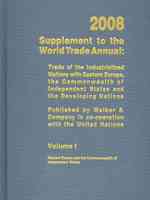Description
This book explores the making, unmaking and remaking of social infrastructure in 窶詫eft-behind places窶�. Such places, typically once flourishing industrial communities that have been excluded from recent economic growth, now attract academic and policy attention as sites of a political backlash against globalisation and liberal democracy. The book focuses on the role of social infrastructure as a key component of this story.
Seeking to move beyond a narrowly economistic of reading 窶詫eft behind places窶�, the book addresses the understudied affective dimensions of 窶詫eft-behindness窶�. It develops an analytical framework that emphasises the importance of place attachments and the consequences of their disruption; considers 窶詫eft behind places窶� as 窶藁oral communities窶� and the making of social infrastructure as an expression of this; views the unmaking of social infrastructure through the lens of 窶腕oot shock窶�; and explains efforts at remaking it in terms of the articulation of 窶腕adical hope窶�.
The analysis builds upon a case study of a former mining community in County Durham, North East England. Using mixed methods, it offers a 窶賄eep place study窶� of a single village to understand more fully the making, unmaking and remaking of social infrastructure. It shows how a place once richly endowed with social infrastructure, saw this endowment wither and the effects this had on the community. However, it also records efforts of the local people to rebuild social infrastructure, typically drawing the lessons of the past. Although the story of one village, the methods, results and policy recommendation have much wider applicability.
The book will be of interest to researchers, policy makers and others concerned with the fate of 窶詫eft behind places窶�.
Table of Contents
1. Introduction 2. 窶廊eft-behind窶� places and social infrastructure 3. Methods: researching the affective dimensions of 'left behind places窶� to underpin new policy approaches 4: Political economy of Sacriston 5. Moral community: the making of social infrastructure in Sacriston 6. Root shock: unmaking social infrastructure in Sacriston 7. Radical hope: remaking social infrastructure in Sacriston 8. Conclusions and policy implications








